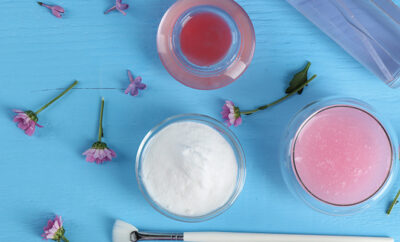
Keeping Your Hair Sun Safe!
Summer is the season for carefree hair. Unfortunately, too much sun can be almost as hard on your hair as it is on your skin. Solar heat and UV rays strip moisture, shine and color. The result is hair that looks and feels dry. Too much sun is bad for all kinds of hair, from blonde to African American. Color-treated hair is especially vulnerable.
You know you’ve had too much sun when your skin starts to burn. With hair, dryness is a sign of overexposure to heat and sun. Prolonged exposure to UVA and UVB rays damages the cuticle, which is the outer layer of a hair strand. Brittle hair, split ends, frizziness and discoloration are all signs of sun damage.
There are variety of hair care products that help protect hair from the sun and repair sun damage. They haven’t invented sunscreens for hair, so you won’t see SPF numbers on these products. Instead, look for labels that offer antioxidants and UV protection. Products with antioxidants and plant-based oils can also help protect the scalp from skin cancer. According to dermatologist Kavita Mariwalla, “Antioxidants will scavenge free radicals caused by UV damage and can help prevent the damage that can lead to skin cancer.” Sunflower oil is especially helpful since it contains fatty acids that can replenish dry hair.
Here’s a rundown on sun protection and repair products recommended by hair care experts.
Sun shields and mists coat the hair to protect from sun exposure. Many also fight the effects of saltwater and chlorine. You typically spray these products on your hands and use your fingers to work them through your hair before spending time in the sun. Aveda’s Protective Hair Veil contains natural ingredients such as shea butter, coconut oil and vitamin E to protect and treat hair. For colored hair, Paul Mitchell Color Protect Locking Spray includes sunflower extract to protect color-treated hair and conditioning agents to moisturize.
Combination protection sprays provide UV protection for both the hair and skin. Shiseido, Clarins and many other skincare makers have sun products designed to be absorbed into both hair and skin without leaving a greasy residue.
Hair serums, which are oils that are applied to the hair’s surface, can be used to treat and style sun-damaged hair that’s frizzy or has lost its shine. These products are applied after shampooing and conditioning to either wet or dry hair. L’Oreal and Redken have lines of hair serums that treat a variety of hair issues.
Hair masks provide a deep conditioning treatment for damaged hair, working like skin masks to replenish lost moisture and strengthen hair. Masks are left on longer than conditioners, anywhere from several minutes to overnight. They nourish hair with natural oils and butters such as shea, coconut, avocado and argan. Garnier offers hair masks made with honey and papaya and banana extracts that help repair and fortify hair that has been damaged by heat. Aveda After Sun Hair Masque uses tamanu oil and organic coconut oil to replenish sun-exposed hair. You can find recipes online for DIY hair masks made from kitchen ingredients such as yogurt, coconut oil, avocado oil, honey and apple cider vinegar.
Exposing hair to harsh chemicals, especially pool chlorine, can multiply sun damage. Remember to rinse your hair right after swimming in a chlorinated pool and avoid radical hair color processes such as bleaching during the summer months. Shampooing every day should be avoided if possible since it can strip hair of essential oils. Instead, shampoo and condition every two to three days. Reducing blow-drying time is another way to protect hair from becoming over-dry in warm weather. Try switching to a lower heat setting or ditch the dryer altogether and let hair air dry.
Think about your scalp as well. Wearing a hat serves the double purpose of protecting both the hair and scalp. A broader-brimmed hat is the best protection since it provides the most coverage, while visors leave too much hair and skin exposed. And some sunscreen products can be used on parts and hairline without gunking up your hair.
Hair styling in warm weather can be complicated by heat and humidity. If you prefer tying up your long hair during an outdoor workout or a visit to the beach, be sure to use a wrapped elastic band that protects from hair breakage. Many haircare experts, including famed Parisian stylist David Mallett, advise against tight topknots and ponytails because they can damage hair follicles and the hairline. Instead, opt for a low ponytail or braid tied with a soft elastic.
Finally, frequent trimming is probably the best way to restore hair that has seen too much sun, wind and heat. Getting split ends cut every 8 to 12 weeks will keep hair looking healthy and neat. ■
Sources: clevelandclinic.org, allure.com, elle.com and byrdie.com.







